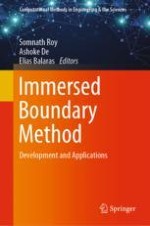2020 | OriginalPaper | Chapter
4. Coupling the Curvilinear Immersed Boundary Method with Rotation-Free Finite Elements for Simulating Fluid–Structure Interaction: Concepts and Applications
Authors : Anvar Gilmanov, Henryk Stolarski, Fotis Sotiropoulos
Published in: Immersed Boundary Method
Publisher: Springer Singapore
Activate our intelligent search to find suitable subject content or patents.
Select sections of text to find matching patents with Artificial Intelligence. powered by
Select sections of text to find additional relevant content using AI-assisted search. powered by
